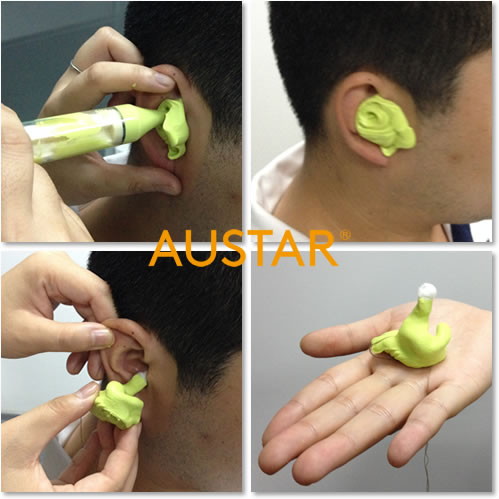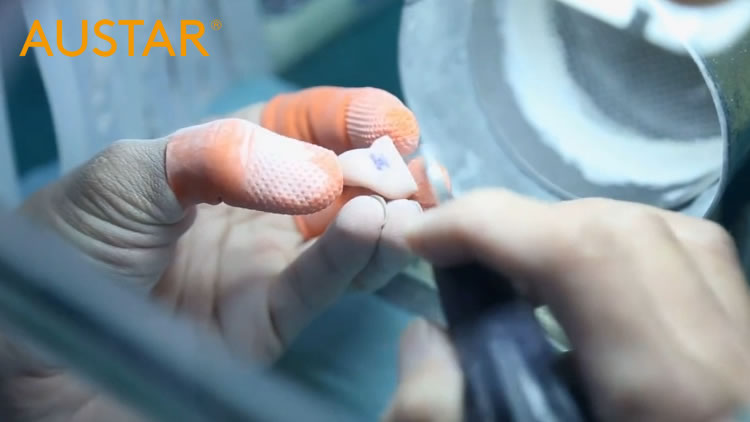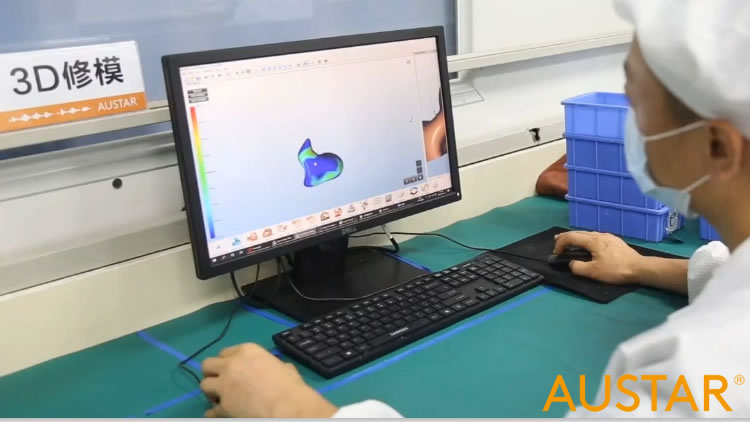How to make a custom in-ear hearing aid shell fit tightly into the ear canal
Customized in-ear hearing aids are customized according to the outline of the external auditory canal of the hearing-impaired patient, and there is inevitably a problem of fitting the shell and the external auditory canal. It is common for the shell to be too small or too large, which can cause various discomforts to hearing-impaired patients. How to make the custom in-ear hearing aid shell and ear canal fit tightly?
Due to the small size of the housing, especially the fully in-the-canal CIC and in-the-canal ITC hearing aids. If it is worn too loosely, it will sometimes slip out of the external auditory canal, especially when the hearing-impaired person makes oral movements, such as talking or yawning, the external auditory canal will peristaltic, which will cause the hearing aid to move outward. At the same time, the hearing aid is also prone to produce acoustic feedback.

Hearing aid earmold shell size is too small
- When the external auditory canal part of the original ear impression is long enough, the length of the external auditory canal part of the shell is lengthened, the thickness of the second bend is increased, and the fit between the shell and the external auditory canal is improved.
- If the ear canal part of the ear mark is not long enough, let the hearing-impaired patient open his mouth, take the ear mark again, and make a new shell to ensure that the external auditory canal part exceeds the second bend.
- If the external auditory canal of the hearing-impaired patient is short and straight, and the case cannot be solved by trimming and redoing the case, an ear-end lock can be added to the case for support, or a type of hearing aid that wears more firmly can be replaced, such as replacing the full-ear canal CIC hearing aid with an ear-shaped hearing aid. Canal type ITC hearing aids, the ear canal type is replaced by the concha type.

For hearing-impaired patients with severe hearing loss, in order to prevent the generation of acoustic feedback, the hearing aid shell is often larger. At this time, the tighter the shell is in contact with the external auditory canal or the concha cavity, the greater the pressure exerted by the shell, resulting in uncomfortable wearing. In addition, the part of the external auditory canal will be longer. At this time, the sound tube or the protruding anti-earwax device will easily touch the wall of the external auditory canal, causing discomfort. These will make users refuse to wear hearing aids due to congestion, pain, and difficulty in taking and wearing them.

Hearing aid earmold shell size is too large
- On the basis of not causing acoustic feedback, polish the part with high local pressure, or shorten the part of the external auditory canal.
- If the sound tube touches the wall of the external auditory canal, adjust the angle of the sound tube so that the direction of the sound outlet is consistent with the direction of the external auditory canal.
- If the protruding earwax preventer is against the wall of the ear canal, replace it with a suitable earwax preventer.
- Re-take the ear prints and recreate the case, but avoid making them too small to cause acoustic feedback.
Hearing aid earmold replacement
If the shell of the in-ear hearing aid is too small or too large to cause discomfort, the shell needs to be replaced, which means that you need to re-customize the ear mold to obtain better results.
The above is the solution for size of the custom hearing aid shell. For OTC hearing aids supplied by Cadenza, you only need to replace the ear domes according to the size of the ear canal. Generally, there are 3 sets of ear domes that can be replaced.
- Recent Posts
- The OTC Hearing Aid Wholesale Core – Customization, Compliance, and Smart Auditory Tech
- CADENZA A6: 100H Battery and 32-Channel Tech for OTC Hearing Aid Differentiation
- OTC Hearing Aid Dividends: CADENZA OEM/ODM Strategy for CVS/Best Buy Expansion
- Beyond Price: Why Global Distributors Choose CADENZA for OTC Hearing Aid Compliance and Volume
- Power Your Private Label: CADENZA Offers Unmatched OEM/ODM Scale for the OTC Hearing Aids
- The $100 Billion Question: How CADENZA Makes Quality Hearing Aids Affordable for Everyone
- Hearing is Believing: CADENZA Hearing Delivers Premium Quality Without the Prescription Price
- Discreet RIC Hearing Aids for a Natural Fit
- Smart Hearing Aids: App Control & Bluetooth for OTC
- Types of Hearing Aids
- BTE hearing aids
- ITE hearing aids
- Instant fit CIC hearing aids
- Rechargeable hearing aids
- RIC hearing aids
